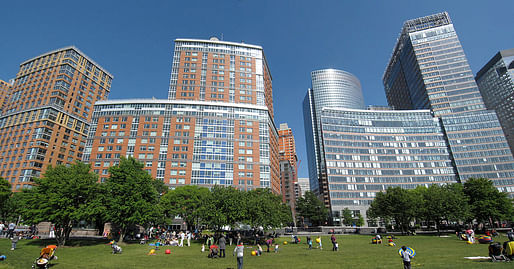

Buro Happold and the Battery Park City Authority have published a 10-year sustainability plan that aims to achieve carbon neutrality for the 36-acre district situated on the southern tip of Manhattan by 2050.
The district, which sits just beside the World Trade Center site, contains over 22 million square feet of built area, according to Buro Happold's report, and its new plan is considered among the largest such district visions in the country.
The plan aims to articulate a "holistic vision" for drawing down operating emissions from buildings in the area through a mix of approaches that includes deep energy retrofits, building electrification conversions, low-carbon district energy systems, implementation of renewable energy supply and storage advances, and extensive monitoring of greenhouse gas emissions. Additionally, the plan would implement wastewater treatment and recycling strategies, including for storm water runoff, greater supervision of construction waste streams, and various environmental quality approaches to "improve health and wellness and make Battery Park City an even more desirable place to live, work, and visit," according to the report.
The district is no stranger to sustainability, of course. The Pelli Clarke Pelli Architects and SLCE Architects-designed Solaire tower was the first LEED certified residential tower in the United States when it first opened in 2010.
No Comments
Block this user
Are you sure you want to block this user and hide all related comments throughout the site?
Archinect
This is your first comment on Archinect. Your comment will be visible once approved.